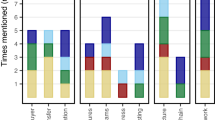
Overview
Part of the book series: Current Plant Science and Biotechnology in Agriculture (PSBA, volume 19)
Access this book
Tax calculation will be finalised at checkout
Other ways to access
About this book
Similar content being viewed by others
Keywords
Table of contents (67 chapters)
-
Front Matter
-
Keynote address
-
Front Matter
-
-
Processing and animal feeds
-
Front Matter
-
-
Climate change and biotic and abiotic stresses
-
Front Matter
-
-
Host plant resistance to manage biotic stress
-
Front Matter
-
Editors and Affiliations
Bibliographic Information
Book Title: Expanding the Production and Use of Cool Season Food Legumes
Book Subtitle: A global perspective of peristent constraints and of opportunities and strategies for further increasing the productivity and use of pea, lentil, faba bean, chickpea and grasspea in different farming systems
Editors: F. J. Muehlbauer, W. J. Kaiser
Series Title: Current Plant Science and Biotechnology in Agriculture
DOI: https://doi.org/10.1007/978-94-011-0798-3
Publisher: Springer Dordrecht
-
eBook Packages: Springer Book Archive
Copyright Information: Kluwer Academic Publishers 1994
Hardcover ISBN: 978-0-7923-2535-2Published: 31 March 1994
Softcover ISBN: 978-94-010-4343-4Published: 16 November 2012
eBook ISBN: 978-94-011-0798-3Published: 06 December 2012
Series ISSN: 0924-1949
Edition Number: 1
Number of Pages: XXXII, 991
Topics: Plant Genetics and Genomics, Agriculture, Plant Sciences, Plant Physiology, Ecology



